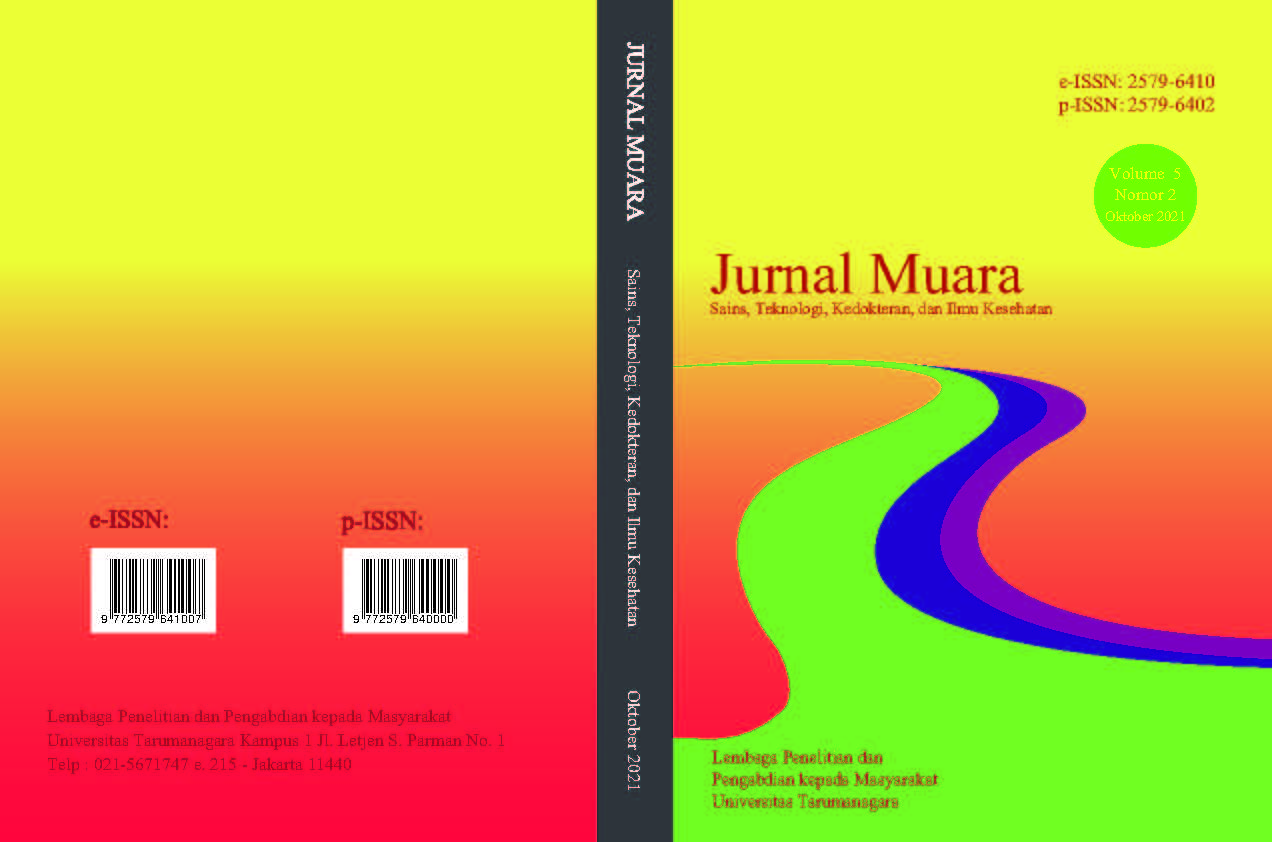INTERAKSI SOSIAL ANTARA WARGA PERMUKIMAN REAL ESTAT DENGAN PENDUDUK DI SEKITAR NYA
Main Article Content
Abstract
The Bonana settlement is located in Cilandak sub-district, Lebak Bulus village. Built on an area of 38 hectares, it is the result of the conversion of gardens and swamps owned by residents who currently still live in the villages around the settlement. In general, those who work in the Bonana Settlement, live in the villages around the Bonana settlement. The Bonana settlement is equipped with public and social facilities. The Bonana settlement is equipped with green open spaces, in the form of gardens, tennis courts, and green open spaces along the main drainage channel. Green open space equipped with a children's play area (playground), basketball and badminton courts and mosque worship facilities. The facilities in the Bonana Settlement are also used by residents around the Bonana Settlement. Within the Settlement, the formal economic facilities built by the developer are shops with banking facilities, household needs, medical needs, and places to eat, in addition there is an informal market that sells daily necessities. This informal market was formed by the trading community. In general, settlements built by developers are generally closed to the surrounding community, as a preventive measure against crime, but the Bonana Settlement is open between residents of the settlement and the surrounding community. The purpose of the study was to determine the form of participation of the residents of the Bonana Settlement to maintain the security and comfort of their settlements. The study used a qualitative approach with data collection by interviews and observations, and by using sources. The study obtained the participation of residents of the Bonana Settlement to make a safe and comfortable settlement.
Keywords: Community; Social Interaction; Green Open Space; Public Open Space
Abstrak
Permukiman Bonana, berlokasi di Kecamatan Cilandak, kelurahan Lebak Bulus. Dibangun pada lahan seluas 38 Ha, merupakan hasil konversi kebun dan rawa milik penduduk yang saat ini sebagian masih mendiami perkampungan di sekitar Permukiman tersebut. Pada umumnya mereka yang bekerja di Permukiman Bonana, bertempat tinggal di perkampungan disekitar permukiman Bonana. Permukiman Bonana dilengkapi dengan fasilitas umum dan sosial. Permukiman Bonana di lengkapi dengan Ruang Terbuka Hijau, berupa taman, lapangan tenis, dan ruang terbuka hijau sepanjang saluran utama drainase. Ruang terbuka hijau yang dilengkapi dengan tempat permainan anak (playground), lapangan basket dan bulu tangkis dan fasilitas peribadatan masjid. Sarana yang ada di dalam Permukiman Bonana dimanfaatkan juga oleh warga sekitar Permukiman Bonana. Di dalam Permukiman, fasilitas ekonomi formal yang dibangun oleh pengembang berupa pertokoan dengan fasilitas perbankan, kebutuhan rumah tangga, kebutuhan medis, dan tempat makan, di samping itu terdapa terdapat pasar informal yang menjual kebutuhan sehari-hari. Pasar informal ini dibentuk oleh masyarakat pedagang. Pada umumnya permukiman yang dibangun oleh pengembang umumnya tertutup terhadap masyrakat sekitarnya, sebagai tidakan preventif terhadap tindak kriminal, namun Permukiman Bonana terbuka antara warga permukiman dengan masyarakat sekitar. Tujuan penelitian mengetahui bentuk partisipasi warga Permukiman Bonana untuk menjaga keamanan dan kenyamanan permukimannya. Penelitian menggunakan pendekatan kualitatif dengan pengumpulan data dengan wawancara dan observasi, dan dengan menggunakan narasumber. Penelitian mendapatkan partisipasi warga Permukiman Bonana untuk menjadikan permukiman yang aman dan nyaman.
Article Details
This work is licensed under a Jurnal Muara Sains, Teknologi, Kedokteran dan Ilmu Kesehatan Creative Commons Attribution-ShareAlike 4.0 International License.
Authors transfer copyright or assign exclusive rights to the publisher (including commercial rights)
References
Altman & Wandersman, E., (1987). Neighborhood and Community Environments. Springer Science+Business Media New York Originally published by Plenum Press, New York in 1987.
Ahlbrandt, S. R. (1984). Neighborhoods,People, and Community. New York and London: Plenum Press.
Flint. R. W.(2013). Practice of Sustainable Community Development A Participatory Framework for Change. New York: Springer Science+Business Media.
Gottdiener.M, Hutchison. R (2011) The new urban sociology, 4th ed. Philadelphia: Westview Press.
Girling. C, Kellett. R. (2005). Skinny Streets and Green Neighborhoods. Washington DC: Island Press.
Flanagan, W. G. (2010).Urban sociology : images and structure.5th ed. Lanham, Maryland: Rowman & Littlefield Publishers, Inc.P:350
Homoud. M.A & Tassinary.L.G, (2004). Social interactions at the neighborhood-level
as a function of external space enclosure. https://www.researchgate.net/publication.
Hidayat, I.W. (2010). The Ecological Role Of Trees and Their Interactions in Forming The Micro Climate Amenities of Environment. Jurnal Bumi Lestari volume 19, halaman 182-190. file:///C: & http://ojs.unud.ac.id/
Mamaghani. N.K. Asadollahi. A.P., Mortezaei. S.R (2015). Designing for Improving Social Relationship with Interaction Design Approach. Asian Conference on Environment-Behaviour Studies. Procedia-Social and Behavioral Sciences. https://www.sciencedirect.com.
Omar.D., Ibrahim. F.I.,Nik Muhamad.N.H (2015). Human Interaction In Open Spaces. Asian Conference On Environment-behavior Studies. Procedia-Social and Behavioral Sciences. https://www.sciencedirect.com.
Park.E, Bugess.W.(1921). Introduction To The Sciences of Sociology. Chicago: University of Chicago Press.
Robertson.D., Smyth.J., and McIntosh.,I. (2008). Neighbourhood identity. Joseph Rowntree Foundation. 11:30:05. http://www.tandfonline.com/doi/abs/1
Rao, R. (1997). An Approach to Open Space Planning Based on the Principles of Landscape Ecology: An Application to Greater Roanoke Area. Thesis submitted to the faculty of the Virginia Polytechnic Institute and State University in partial fulfillment of the requirements for the degree of Master of Landscape Architecture. https://theses.lib.vt.edu/
Rode, P., and Burdett. (2011) Cities: investing in energy and resource efficiency. Towards a green economy: pathways to sustainable development and poverty eradication. United Nations Environment Programme, pp.453-492. ISBN 9789280731439. <http://www.unep.org/greeneconomy/greeneconomyreport
Schwirian. K.P.(1983). Models Of Neighborhood Change.Annual Review of Sosiology, Volume 9.(1983).pp 83-102. http://www.annualreviews.org/doi/abs/.
Siegmunt. O. (2016). Neighborhood Disorganization and Social Control. New York: Springer.
Srinivas. H (2003). The Ecosystem Approach to Urban Environmental Management, Operationalizing the Cities as Sustainable Ecosystems (CASE) Initiative. http:/unep.or.jp/ietc/Focus/eco.pdf.
Soeriaatmadja, R.E. (1989). Ilmu Lingkungan, edisi keempat. Bandung: ITB.
Webster. A. (1990). Introduction to the Sociology of Development.second edition. New York PALCRAVE Houndmills, Basingstoke, Hampshire RC21 6XS and
Fifth Avenue, New York, N.Y. 10010. Transferred to digital printing 2002.
Zabel. (2007). Street Trees: A New Hampshire Primer. Benefits and Implementation Considerations. Rockefeller Center at Dartmouth College Policy Research Shop A Center for Public Policy and the Social Sciences.<http://policyresearch.dartmouth.edu >





